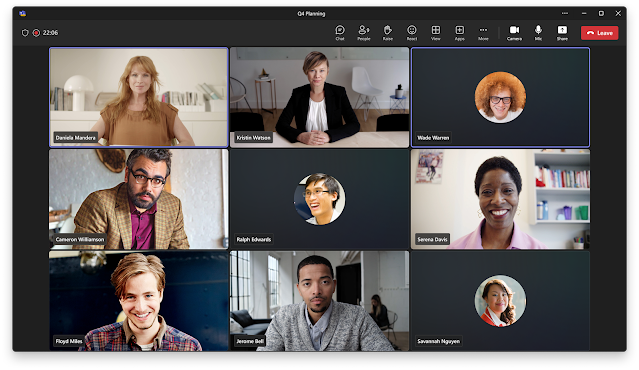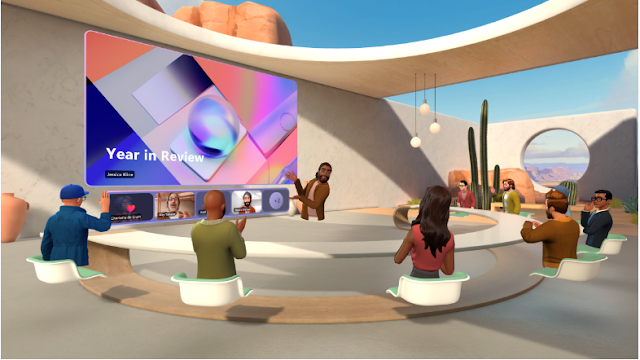Enhancing Collaboration in 2024: Microsoft Teams Introduces New Gallery, Immersive Spaces, and Improved Audio-Video Settings
The landscape of virtual collaboration and communication is constantly evolving, and Microsoft Teams is at the forefront of this transformation. In 2024, Teams is introducing groundbreaking updates that are set to significantly enhance the way individuals and organizations communicate and collaborate. These updates include a new gallery view in Teams meetings, the introduction of immersive spaces, and improved audio and video settings. This comprehensive guide will delve into each of these updates, exploring their features, benefits, and the impact they will have on your daily work in Teams.
1. New Gallery View in Teams Meetings: Microsoft Teams is introducing a new gallery view in meetings and calls, a development that promises to change the way users experience virtual meetings. This update is part of Microsoft 365 Roadmap ID 118467 and marks a significant shift in how Teams displays participants in a meeting.
Features of the New Gallery View:
- Consistent Aspect Ratio: The 16:9 aspect ratio for participant tiles is now a standard feature. This uniformity in the aspect ratio brings a sense of consistency and predictability to meetings. It ensures that the experience remains unchanged when users turn their videos on or off, providing a more stable and professional visual layout.
- Inclusive Audio-Video Mix: The new gallery view introduces an integrated space for both audio and video participants. This feature is crucial in creating an inclusive environment where every participant, regardless of whether they are using video or audio, is given equal prominence in the meeting space.
- Enhanced Visibility for Meeting Rooms: In certain meeting sizes, Microsoft Teams Rooms (MTR) videos will be displayed in a larger size compared to individual participants. This adjustment gives equivalent visibility and importance to participants joining from a meeting room, ensuring that their presence is adequately represented.
- Personalized Gallery Customization: Microsoft Teams is offering enhanced customization options for the gallery view. Users can now adapt the gallery to their preferences, including:
- Gallery Size Adjustment: Participants can choose the maximum number of tiles displayed per page, catering to different screen sizes and personal preferences.
- Self-Tile Placement: For those who prefer to view themselves separately from other participants, the option to remove their tile from the main gallery is now available.
- Video Prioritization: Users have the choice to prioritize video participants, ensuring that those with active video feeds are given prominence in the meeting layout.
- Meeting Room Tile Size Customization: Participants can decide if they want to resize the meeting room tile to match the size of individual participant tiles, offering flexibility in how meeting rooms are visually represented.
Rollout Timeline: The rollout of the new gallery view will be staggered across different user groups:
- Targeted Release: The rollout for Targeted Release users will begin in late January 2024, with completion expected by early February 2024.
- Production and GCC Users: For Production and GCC users, the rollout will start in mid-February 2024 and is expected to complete by late February 2024.
- GCC High and DoD: The rollout for GCC High and DoD users will commence in late February 2024 and is anticipated to be complete by early March 2024.
Impact on Organizations and Preparatory Steps: Organizations will need to prepare for this change by notifying users and updating training documentation. This preparation is crucial to ensure a smooth transition to the new gallery view and to leverage its benefits fully.
2. Immersive Spaces in Microsoft Teams: The integration of Mesh technology into Microsoft Teams heralds a new era in virtual meetings. With immersive spaces, Microsoft is bringing a dynamic and engaging 3D experience to Teams meetings. This feature, associated with Microsoft 365 Roadmap ID 161720, allows users to transform traditional 2D meetings into immersive 3D environments.
Features and Functionality of Immersive Spaces:
- One-Click Transformation: With just a click, users can convert their standard Teams meeting into a 3D immersive space. This feature is designed to make virtual meetings more engaging and interactive.
- System Requirements: To access immersive spaces, PCs require a minimum of 4 cores and 8 GB of RAM. This requirement ensures that the 3D environments are rendered smoothly and without performance issues.
- Device Compatibility: In addition to Windows PCs, immersive spaces are also accessible on Meta Quest VR devices, expanding the range of hardware that can leverage this feature.
- License Availability: Immersive spaces are available under various Teams and Microsoft 365 licenses, including Teams Essentials, Microsoft 365 Business Basic, Microsoft 365 Business Standard, Microsoft 365 E3/E5, and Office 365 E1/E3/E5.
Rollout and Adoption:
- Preview Phase: The preview of immersive spaces rolled out in October 2023.
- Standard Release: The standard release is scheduled to begin in early January 2024 and is expected to be completed by late January 2024.
Impact on Organizations and Management: The introduction of immersive spaces requires organizations to update their approach to virtual meetings. Admins can manage the Mesh Immersive spaces app in Teams via the Microsoft Teams Admin Center. Additionally, a separate agreement with Microsoft is necessary for enabling spatial audio for Mesh experiences.
3. Improved Audio and Video Settings in Teams Meetings: The update to audio and video settings in Microsoft Teams, under Microsoft 365 Roadmap ID 187098, is designed to make managing these settings more intuitive and accessible during meetings. This update simplifies the process of adjusting audio and video settings, making it more efficient and user-friendly.
Enhancements to Audio and Video Settings:
- Accessible Flyouts: The new flyouts for audio and video settings are easily accessible during meetings. Users can quickly manage their settings without navigating through multiple layers of menus.
- Side Panel Access: Additional audio and video settings are available in panels that open on the right side of the calling window. This feature provides a centralized location for all relevant settings, making it easier for users to find and adjust them as needed.
- Quick Settings Confirmation: The flyouts allow users to quickly confirm the state of key settings before turning on their camera and microphone. This feature is particularly useful in ensuring that users are prepared before they become visible or audible in a meeting.
- Central Hub for Settings: The side panels serve as a central hub for all audio and video features. Users can access a wide range of settings from this hub, streamlining the process of customizing their audio and video experience.
Rollout Timeline:
- Targeted Release: The rollout for the updated audio and video settings will begin in early January 2024, with completion expected by mid-January.
- Standard Release: For the standard release, the rollout will commence in mid-January 2024 and is anticipated to be complete by late January 2024.
Impact on Organizations and Preparation: With the introduction of these enhanced settings, organizations may need to update their internal documentation and training materials. It's important for users to be aware of these changes and understand how to utilize the new features to optimize their meeting experience.
Conclusion: The updates coming to Microsoft Teams in 2024 are set to significantly enhance the virtual collaboration experience. From the new gallery view and immersive spaces to improved audio and video settings, these features are designed to make virtual meetings more engaging, inclusive, and efficient. As organizations prepare to embrace these changes, it's crucial to stay informed and adapt to the evolving landscape of virtual collaboration.







Comments
Post a Comment